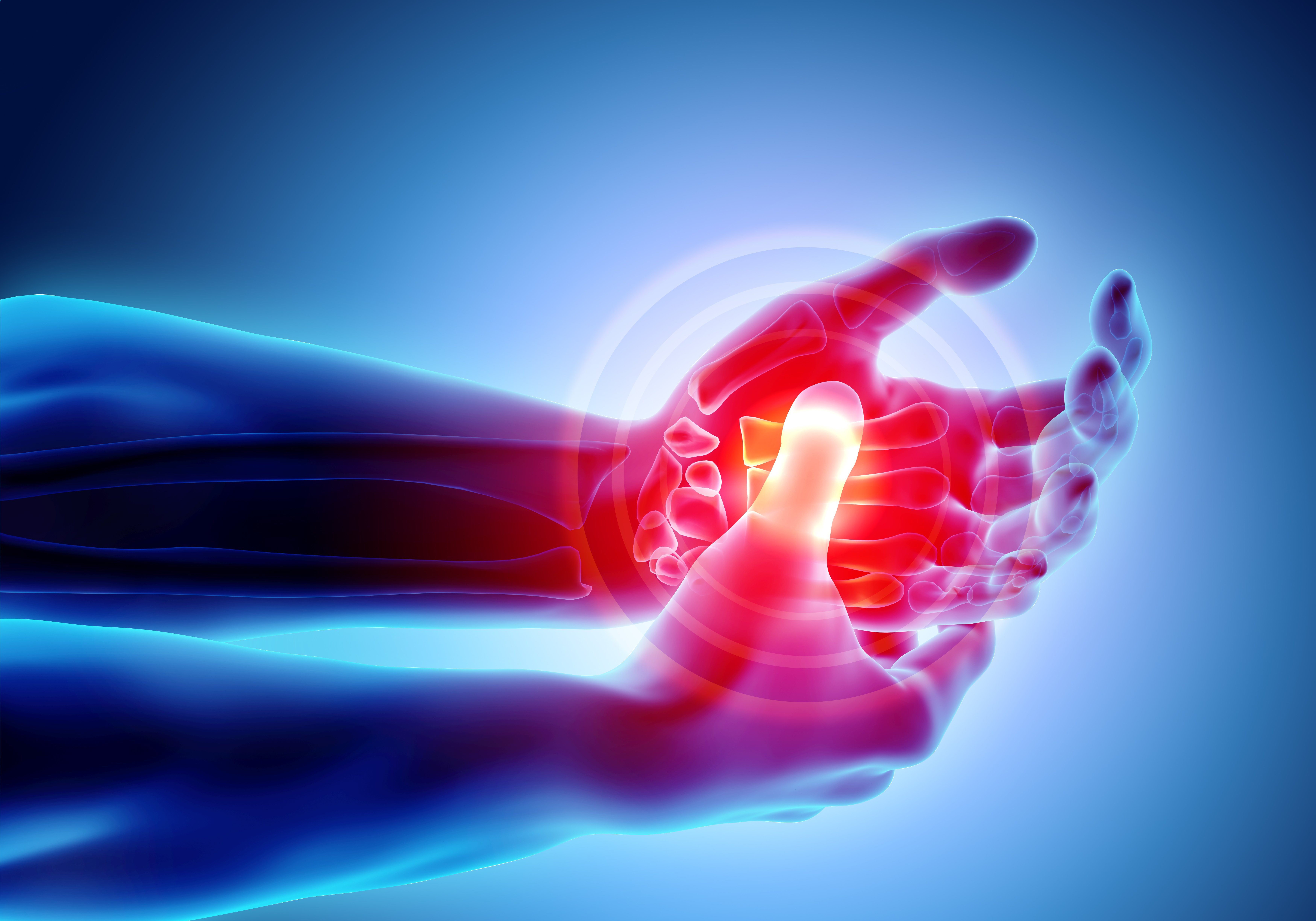Rheumatoid Arthritis
The Bare Bones of a Painful Disease
Rheumatoid arthritis (RA) is a long-term autoimmune disorder that primarily affects joints, though it can also damage a variety of body systems including the skin, eyes, lungs, heart and blood vessels. As an autoimmune disorder, rheumatoid arthritis occurs when the immune system mistakenly attacks the body's own tissues.
Unlike osteoarthritis, which affects millions of people worldwide and occurs when the protective cartilage cushioning the ends of bones wears down, rheumatoid arthritis affects the lining of the joints, causing a painful swelling that can eventually result in bone erosion.
While symptoms may vary in severity, and they may even come and go, rheumatoid arthritis can cause joints to deform over time and shift out of place.
Symptoms of Rheumatoid Arthritis
The most common signs and symptoms of rheumatoid arthritis include:
- Tender and swollen joints that are warm to the touch
- Joint stiffness that is worse in the mornings and after periods of inactivity
- Fatigue, fever and loss of appetite
Rheumatoid arthritis usually affects smaller joints initially, such as finger and toe joints, before progressing to the wrists, knees, ankles, elbows, hips and shoulders. In most cases, symptoms occur in the same joints on both sides of the body.
People with rheumatoid arthritis can also experience a myriad of other problems if the condition is left untreated including issues with the lungs, heart, kidneys, nerve tissue, bone marrow and blood vessels.
Having RA also increases the risk of developing Sjögren’s disease, which causes dryness in the eyes and mouth. It can also cause saliva ducts to narrow or close, leading to an uncomfortable feeling of dryness and difficulty eating and swallowing.
According to Medical News Today, some 80% of people with RA will find their lungs affected by the disease. This may cause no symptoms, but prolonged inflammation in the lungs can lead to pulmonary fibrosis, which can cause scarring and breathing difficulties.
Causes of Rheumatoid Arthritis
Like most autoimmune diseases, the cause is never a clear-cut issue. In the case of RA, a perfect storm of genetics, environment and autoimmunity appears to be behind the disease, with heritability estimated at 60%.
Normally, the immune system helps protect the body from infection and disease. However, in the case of RA, the immune system actually attacks healthy tissue in the joints, and while genes don't specifically cause rheumatoid arthritis, they can make a person more likely to react to environmental factors — such as infection with certain viruses and bacteria — that may trigger the disease.
An oral microbiome has also been recently linked with the onset of Rheumatoid Arthritis.
Risk and Diagnosis
Women are more likely than men to develop rheumatoid arthritis, with middle age being the most common time to develop symptoms. As mentioned, there is an increased likelihood of developing the disease if it runs in the family and smoking will also increase the risk. People who are overweight are also at a higher risk of developing RA.
Rheumatoid arthritis can actually be difficult to diagnose as many conditions can cause joint stiffness and inflammation. Though there is no definitive test for RA, blood tests can help to confirm diagnosis. Some of the main blood tests available include:
- erythrocyte sedimentation rate (ESR) which can help assess levels of inflammation in the body
- C-reactive protein (CRP) can help measure inflammation levels
- A full blood count, which can be used to rule out other possible causes of symptoms
A related blood test known as anti-cyclic citrullinated peptide (anti-CCP) test is also available. Anti-CCPs are antibodies produced by the immune system and people who test positive for anti-CCP are very likely to develop rheumatoid arthritis, though not everybody with rheumatoid arthritis has this antibody.
Joint scans can also be used to help with diagnosis as they can check for joint inflammation and damage.
Treating Rheumatoid Arthritis
Medication is usually prescribed for rheumatoid arthritis, including a short course of steroids to relieve pain, but these can also bring side effects such as nausea.
At Neomed, our team focuses on holistic forms of treatment, with all programmes customised to suit the needs of guests. However, diet is of paramount importance, together with intensive digestive work, as is detox.
Physiotherapist Lubka explains: “With rheumatoid arthritis, there is an active stage and a chronic stage. In the active stage, when inflammation is high, patients will usually take anti-inflammatory drugs along with other forms of medication to lower the inflammation. When the disease is in its chronic stage, it means the inflammation will be constant and therefore joint and muscular pain will also be constant.
“Of course, the underlying issue with rheumatoid arthritis is immunity so the first thing we must do is modulate the immune system. We have a number of treatments and therapies to do this and our oxygen treatments are especially efficient, such as the Ozone Tenpass. Guests also receive nutritional support, with a package of supplements and infusions designed according to their needs.
“From the physio side, Neomed offers a number of therapies to help with muscle and joint pain. Gentle exercise is highly recommended, with physiotherapy as support.”
For more information on rheumatoid arthritis or to book a consultation please fill in the form below:







